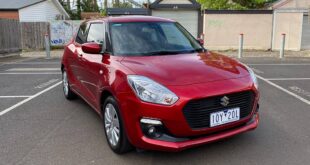For decades, the concept of a flying car has captured the imagination of inventors, engineers, and science fiction enthusiasts alike. The idea of a vehicle that could seamlessly transition between road and sky, bypassing traffic congestion and offering unparalleled freedom, has been a persistent dream. The reality of widespread flying cars is still some years away but the technology is rapidly evolving, and the future of this revolutionary mode of transportation looks increasingly promising.
What is a Flying Car?
A flying car, also known as a roadable aircraft, is a vehicle designed to function both as a conventional automobile and an aircraft. These vehicles combine the capabilities of a car, with features like an engine, seats, and wheels, with the ability to take off and land vertically or with a short runway. Flying cars aim to provide a solution to urban traffic congestion and offer a more efficient and flexible mode of transportation with luxury experience.
Types of Flying Cars:
There are several different approaches to designing flying cars, each with its own advantages and challenges:
- Fixed-wing aircraft with folding wings: These vehicles resemble traditional airplanes with wings that can be folded or retracted for road travel. They require a runway for takeoff and landing.
- Rotorcraft: These flying cars utilize rotors, similar to helicopters, to achieve vertical takeoff and landing (VTOL). They offer greater flexibility in terms of takeoff and landing locations.
- Electric Vertical Take-Off and Landing (eVTOL) aircraft: These are a newer category of flying cars powered by electric motors and capable of VTOL.5 They are often envisioned as a more sustainable and quieter alternative to traditional aircraft.
Challenges and Opportunities:
Despite the technological advancements, several challenges remain before flying cars become a common sight:
- Safety: Ensuring the safety of both air and ground operations is paramount. Developing robust air traffic management systems and certification processes for flying cars is crucial.
- Regulations: Governments worldwide are working on creating regulations and guidelines for the operation of flying cars, addressing issues like airworthiness, pilot licensing, and airspace management.
- Infrastructure: The widespread adoption of flying cars will require the development of new infrastructure, including vertiports (for VTOL aircraft) and designated air corridors.
- Technology: Continued advancements in battery technology, electric propulsion, and autonomous flight systems are essential for improving the efficiency, range, and safety of flying cars.
- Cost: The current cost of developing and manufacturing flying cars is high, making them inaccessible to the average consumer. As technology matures and production scales up, the cost is expected to decrease.
The Future of Flying Cars:
The future of flying cars is bright, with many companies investing heavily in research and development. Several prototypes have been successfully tested, and some manufacturers are aiming to bring their flying cars to market in the coming years.
- Urban Air Mobility: Flying cars will play a significant role in urban air mobility (UAM). It provides a faster and more efficient way to travel within cities and metropolitan areas.
- Regional Connectivity: Flying cars could improve connectivity between cities and regions. It reduces travel time and open up new opportunities for business and tourism.
- Emergency Services: Flying cars could be used for emergency services. It includes search and rescue operations, medical transport, and disaster relief.
- Personal Transportation: In the long term, flying cars could become a form of personal transportation. It offers individuals the freedom to travel by air and road.
The flying car market is still in its nascent stages. Certain regions are showing greater promise and activity than others.
North America currently leads the pack, driven by significant investments in aerospace innovation, a strong presence of key players, and favorable regulatory environments. The US, in particular, is witnessing a surge in flying car startups and established companies exploring urban air mobility solutions.
Asia Pacific expected to be the fastest-growing market in the coming years. Rapid urbanization, increasing technological investments, and government support for innovative transportation are fueling this growth. Countries like China and Japan are actively pursuing flying car technology, with Japan hosting several ambitious projects and collaborations.
Europe is also witnessing considerable activity, with Germany and the UK leading the charge. The region’s strong automotive and aerospace industries, coupled with supportive regulations, are creating a fertile ground for flying car development.
Other regions, like the Middle East and Latin America, are showing growing interest in flying cars, recognizing their potential to address traffic congestion and improve connectivity. However, these regions may face challenges related to infrastructure development and regulatory frameworks.
Overall, the flying car market is evolving rapidly, with different regions adopting unique approaches and focusing on specific applications. As technology matures and regulations establish, we can expect to see increased activity and competition across the globe.
Conclusion:
Certainly, Flying cars are no longer a distant dream but a rapidly approaching reality. Well, the challenges remain, but there are technological advancements and growing interest. Both established companies and startups indicate a promising future for this innovative mode of transportation. They developed regulations , infrastructure, and technology for improvement. So, flying cars could revolutionize the way we travel. It offers a faster, more efficient, and more sustainable alternative to traditional transportation methods. The future of flying cars is taking flight, and it’s an exciting journey to watch.
 Our Gateway to Insightful Blogging Exploring Ideas, Sharing Knowledge, Inspiring Minds
Our Gateway to Insightful Blogging Exploring Ideas, Sharing Knowledge, Inspiring Minds



